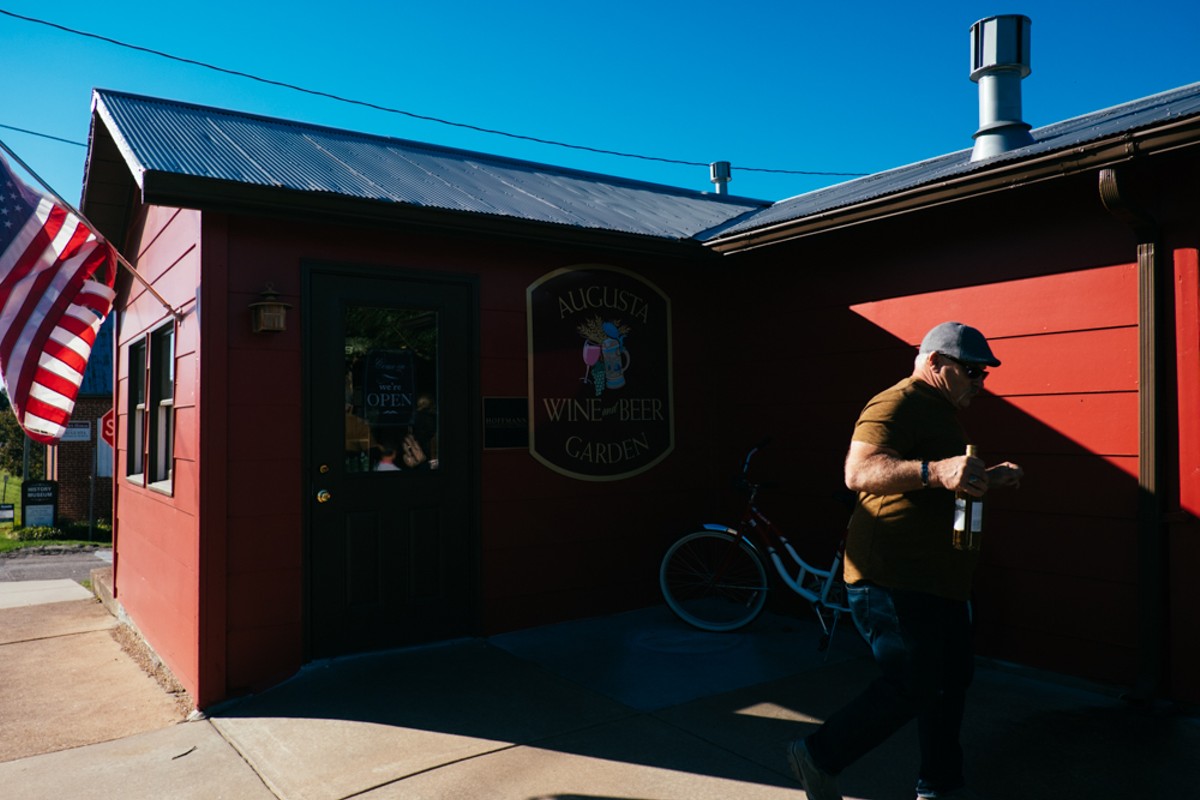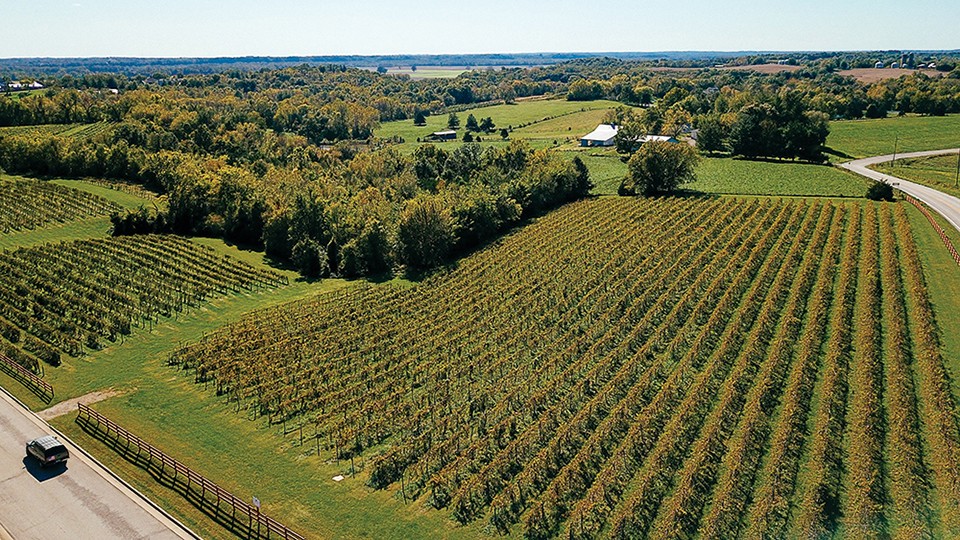Before there was Napa wine, there was Augusta wine. At least officially. When the federal government started designating American Viticultural Areas in the 1980s — a way to mark geographic authenticity and quality — Augusta was the first recognized; Napa, as Missouri wine enthusiasts like to point out, only got its designation eight months later. By then, both regions had been producing wines for more than a century, and back in the mid-1800s it would've made more sense to wonder if Napa could be the next Augusta than the other way around. German settlers to the Missouri River region had brought with them their grapevine clippings and nostalgia for the Old World, ultimately creating a kind of new Rhineland in a string of towns on the shores of the Missouri. By the late 1870s, they were producing roughly 2 million gallons of wine annually, and in their spare time also saved the French wine industry — sending over millions of hardy Missouri rootstocks to fortify French vineyards then being destroyed by parasites.
Over the next four decades, California wines overtook Missouri's in popularity, but Missouri remained the country's second-most important wine region until 1920. At which point, the wine industry that had saved France's was itself destroyed, not by parasites but by Prohibition. Vineyards burned; wine cellars ditched their bottles and stored mushrooms instead. America's alcohol ban lasted only thirteen years, until 1933, but rebuilding Missouri's wine industry took decades, and it never recovered its former status. If not for the 18th Amendment, Augusta and its neighboring river towns might have long since ceased to be quaint.
As it stands, though, quaintness abounds. "It's kind of a Norman Rockwell throwback," says JoAnn Milster, who heads up the local chamber of commerce. During the annual Christmas walk, carolers sing in Ebenezer Church; locals and tourists stroll the streets to admire the lights, check out the glass blower's shop and the Christmas market, maybe munch on some chestnuts; this year, Glenda Drier, a self-described fifth-generation farm gal from Augusta who now breeds Labradors, plans to dye her goat Gertie green to play the Grinch at the event. If a storm comes through, people will show up "looky-looing" at the damage and then walk back to their trucks to get chainsaws and gloves to help clean up debris, and before long someone will show up with a Crock-Pot of chili. "This is a community where, if you get into trouble, everyone's going to show up on your doorstep," Milster says. "And it doesn't matter who you are."
As for the wine, Missouri has rebuilt about half its nineteenth-century winemaking capacity and now sells roughly a million gallons of wine a year; California produces about 685 times that much. Missouri has fewer than 200 wineries, and California has well over 4,000. Missouri's wine tourism is modest, its grapes obscure. Among wine consumers, Napa's Chardonnays and Merlots are standard fare. But who outside Missouri is tippling a Chardonel or a Norton? "I've tasted some really first-rate wines here," says Doug Frost, a writer and wine consultant based in Kansas City, who is both a master sommelier and a master of wine. It frustrates him that many people don't take Missouri wine seriously, if they know there's such a thing at all.
Then there is the land itself, "God's country" to many locals. "This place is 200 years of history, of cellars being dug and wineries being built and vineyards being planted and railroads built and converted to trails," says Dan Burkhardt, the founder of Magnificent Missouri, which works to conserve and enhance the natural landscape of the Missouri River Valley. "Most of America does not have those characteristics."
So the Hoffmanns had grounds to see potential in the region when David Hoffmann, as he told the Post-Dispatch, was driving through in late 2020 and noticed a resemblance to Napa. And Augusta itself, where businesses had been gradually shutting down and moving out to the point that the town lacked its own gas station or grocery store, was a prime target for what the paper called the Hoffmanns' passion for "citymaking." The Hoffmann family, having initially struck it rich through outsourcing and executive recruiting, had already made big investments in three other towns — Naples, Florida; Avon, Colorado, near Vail; and Winnetka, Illinois, near Chicago. The formula was to buy lots of commercial real estate in a given community, then update, renovate and welcome new businesses.
Yet the Hoffmanns had never attempted anything quite like Augusta. Prior Hoffmann projects had centered on towns orders of magnitude more populated, closer to existing tourist destinations or, as in the Naples case, already destinations in their own right. There were many reasons folks liked living in small-town rural Missouri, including family roots, natural beauty and solitude. The stars on a clear night and the changing leaves in the fall. They knew some change was inevitable. But they couldn't help loving the place just the way it was.







